-
ABOUT US
-
ACADEMICS
Curriculum Program
Departments
- English
- High School Chinese
- Primary and Junior School Chinese.
- High School Mathematics
- Middle School Mathematics
- Primary School Mathematics
- Music and Fine Arts
- Physical Education
- Physics
- Chemistry
- History and Geography
- Physical Science and Optional courses Department
- Middle School Biology
- High School Biology
- Social Sciences
- Computer Science
- Courses in Primary School
Achievements and Matriculations
College Counseling
Science & Technology Innovation Contest
Subject Competition
-
ARTS
-
ATHLETICS
-
AT SHSID
SHSID ∣ TIMES
PTSA
Club Exhibition
- 龙吟社
- Live 2 Drama
- Choir
- Hip-pop Dance Club
- The Primary School Dance Troupe
- Symposiums Club
- Biology Workshop
- You Shan
- VEX Robotic
- Peking Opera Club
- Baseball Club
- Model United Nations
- The World Scholar’s Cup
- Future Problem Solving Club
- United States Academic Pentathlon
- OM Club
- AMC Club
- Music for Patients
- SHSID Gazette
- Smile Charity
- Cultural Moments
- SciAcademy
- Stem Doge Alliance
- Chinese Debate Club
- IAA
- Mock Trial Club
- Zhengming Club
- Furry Friends
- GT-Racing
- Village Radio
- IMMC Club
- Creative Design and Intelligent Fabrication
- Future City Research Project
- ECOCAP
- AdvocaSEA
- SPDC
- Medishine
- Floorball Club
- Animusic MTC
- Wings Up
- All Booked
- Cyano
- Birding Community
Health and Wellness
Campus Safety
Cafeteria Service
-
ADMINISTRATION
-
ADMISSIONS
-
ALUMNI
Alumni Information
Honors Students
- Class of 2025
- Class of 2024
- Class of 2023
- Class of 2022
- Class of 2021
- Class of 2020
- Class of 2019
- Class of 2018
- Class of 2017
- Class of 2016
- Class of 2015
- Class of 2014
- Class of 2013
- Class of 2012
- Class of 2011
- Class of 2010
- Class of 2009
- Class of 2008
- Class of 2007
- Class of 2006
Who Studied at SHSID
SHS Foundation
-
DOCUMENTS
Math Comes Alive: G4–G5 Students Measure Charity and Build Cities with Geometry
When math steps out of the textbook and into the real world, it becomes a key to solving complex problems. This semester at Shanghai High School International Division, students in Grades 4 and 5 have explored just that—transforming abstract formulas into practical solutions through two hands-on math projects. Grade 5 students planned and hosted a Charity Fair, integrating scale drawing, charting, and geometry with real-world budgeting and design. Meanwhile, Grade 4 students built model cities using lines, polygons, and 3D shapes, bringing geometry to life in three-dimensional space. With every table sketched and every street mapped, students expressed their imagination through math, letting their knowledge take root through action.
Just as towering trees begin with small shoots, and nine-story terraces rise from piles of earth, the Grade 5 Charity Fair began with a spark of mathematical thinking. Students designed their booths in teams, applying knowledge of probability to create engaging games and optimize their prize structures. From pricing strategies to resource allocation, math played a critical role in every decision. Ingredient ratios were carefully calculated to ensure that their handmade treats were both delicious and cost-effective. These exercises sharpened students’ numeracy skills while nurturing a deeper understanding of responsible giving and smart resource use.
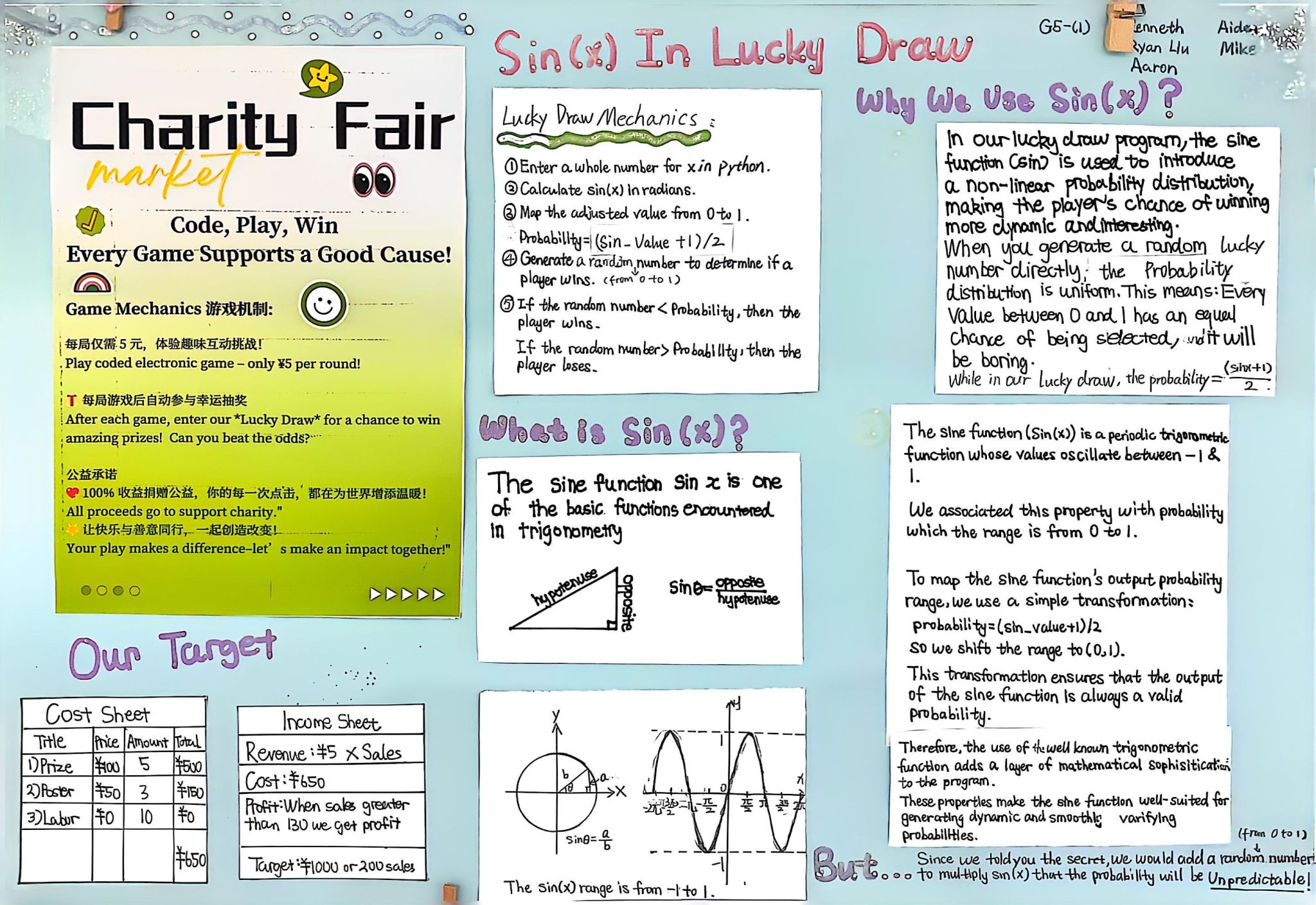
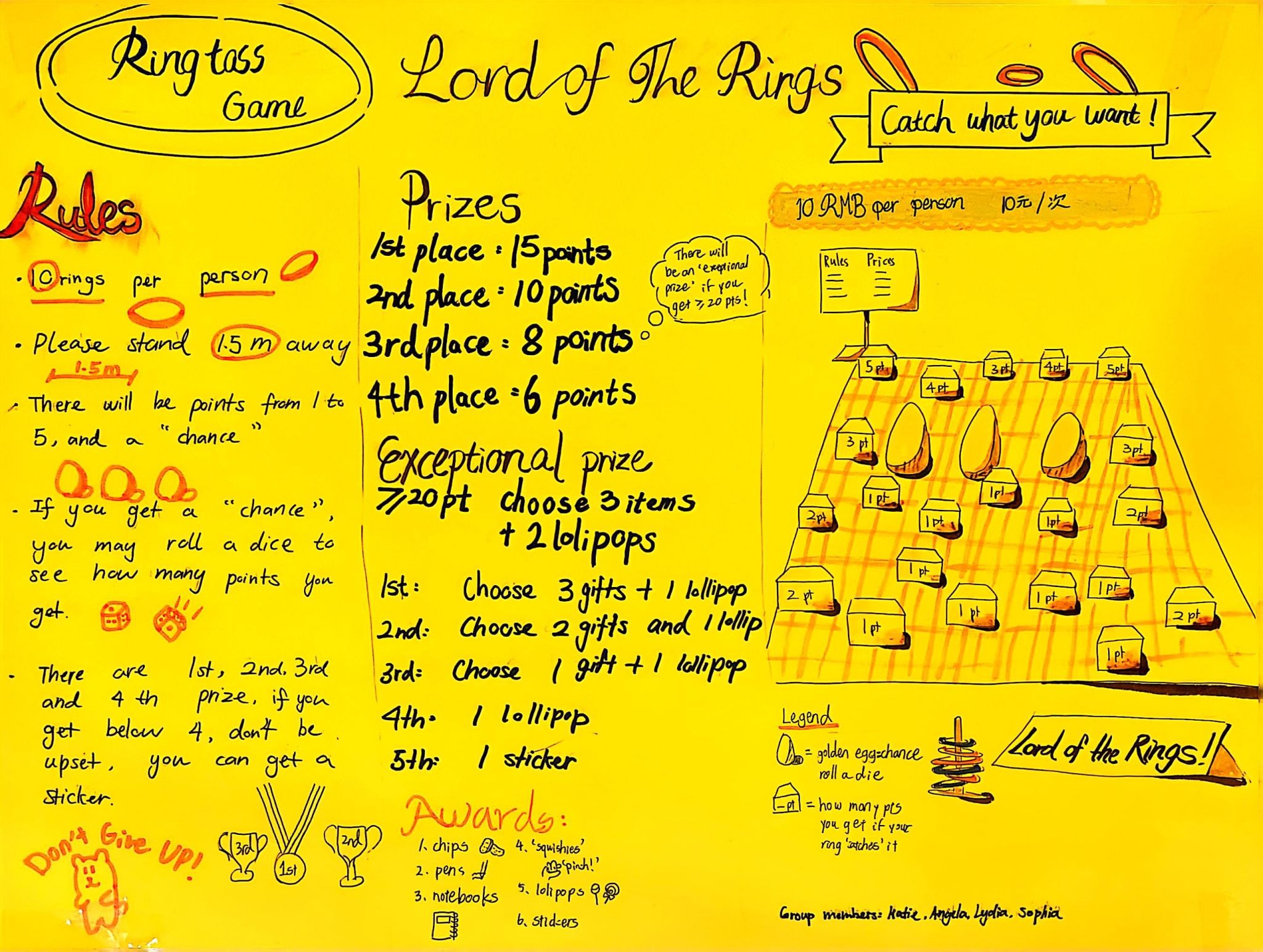
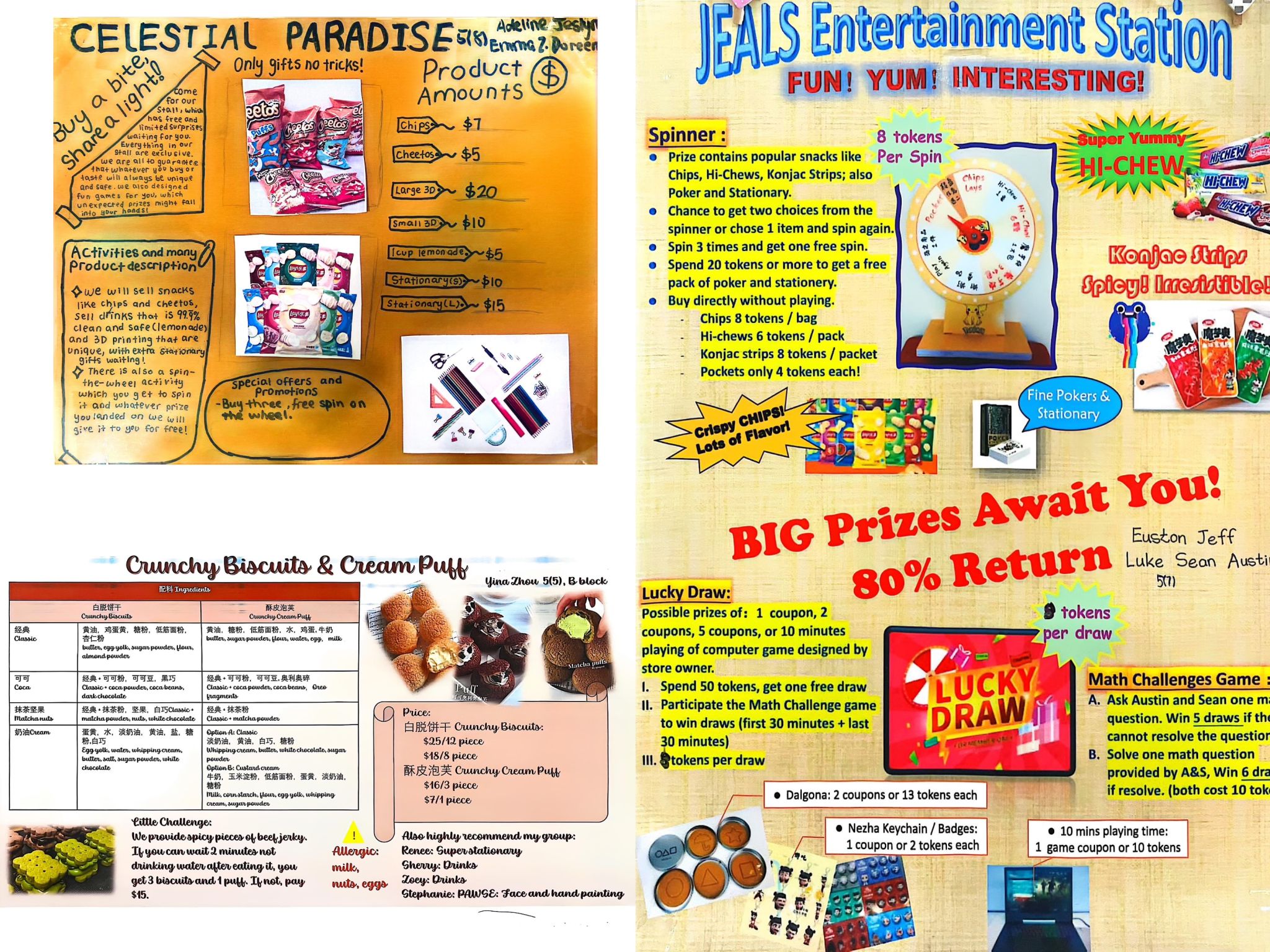
At the fair, each booth became a showcase of mathematical ingenuity. “Lucky Spin,” “Pitch-Pot,” and “Ring Toss” games used probability calculations to design prize tiers that kept crowds coming. The “Food Workshop” stood out for its best-selling desserts, crafted with precision-measured ingredients. Some teams implemented creative promotions like “Buy 3, Get 1 Free” or “Limited-Time Offers” to balance popularity with profit. The fair buzzed with activity, driven by ideas, not just impulse.
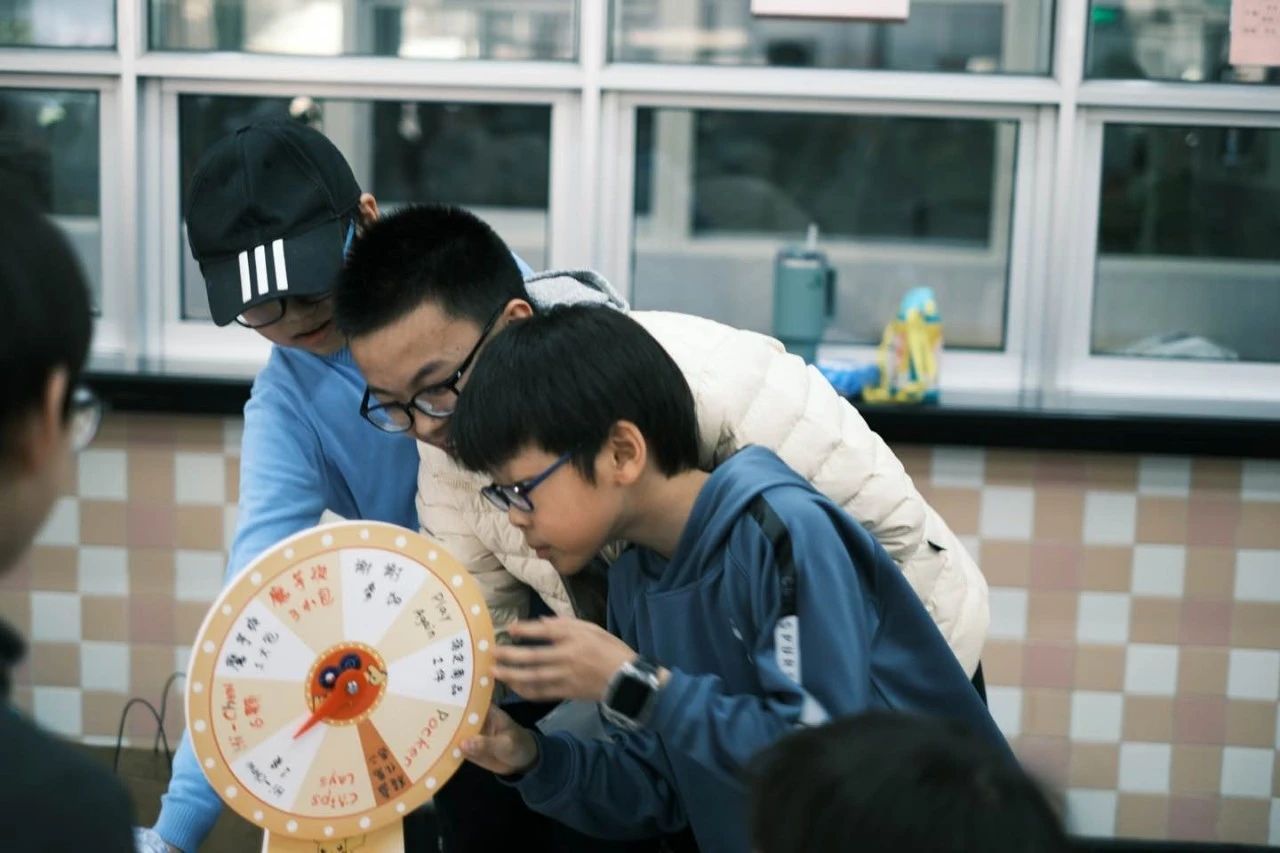
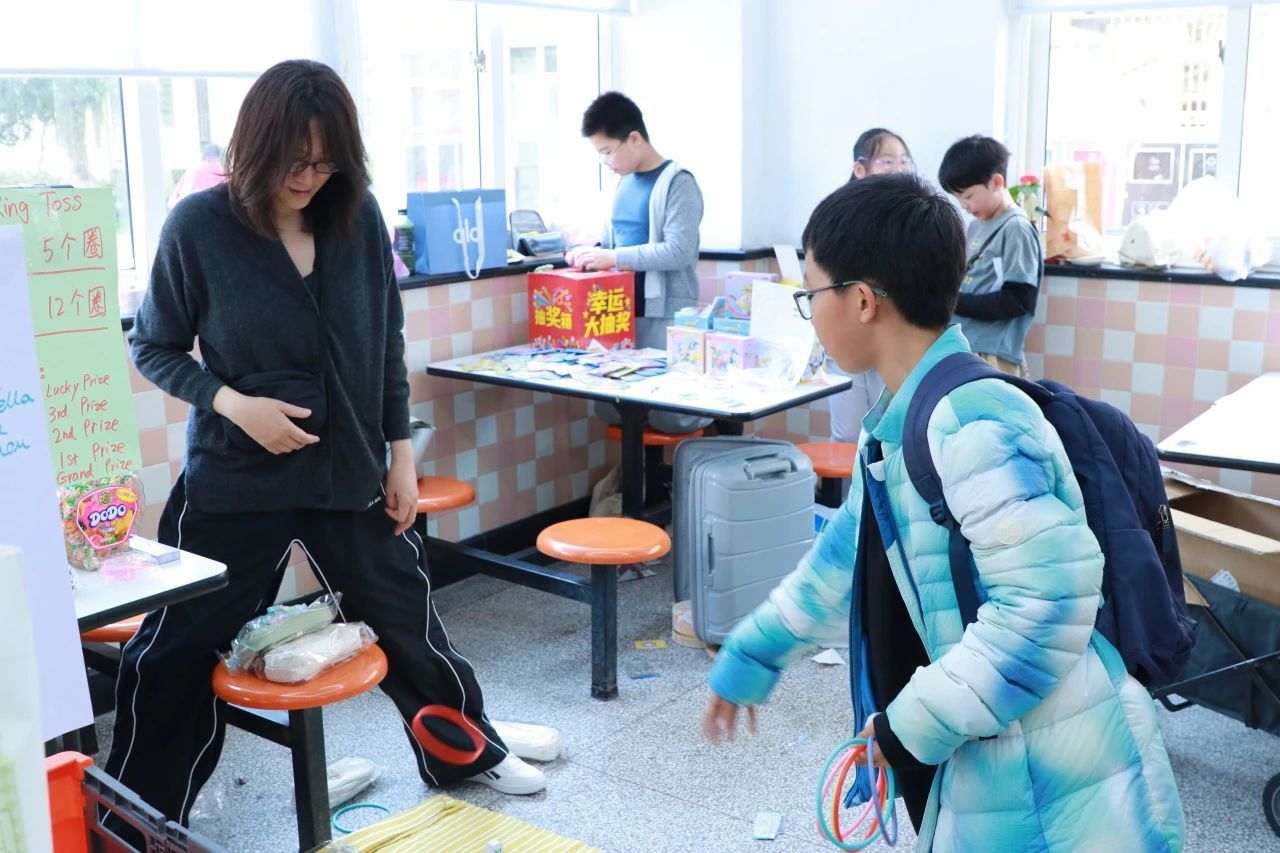
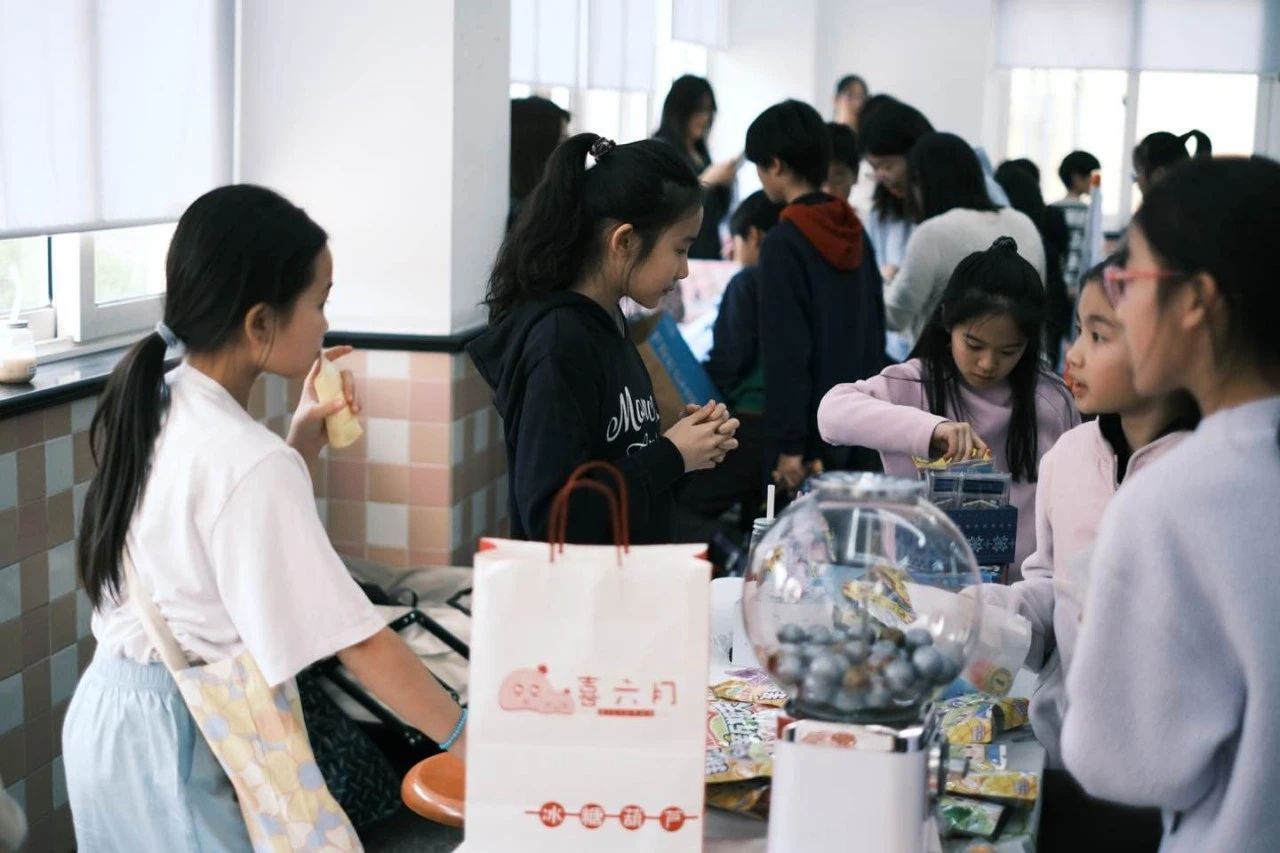
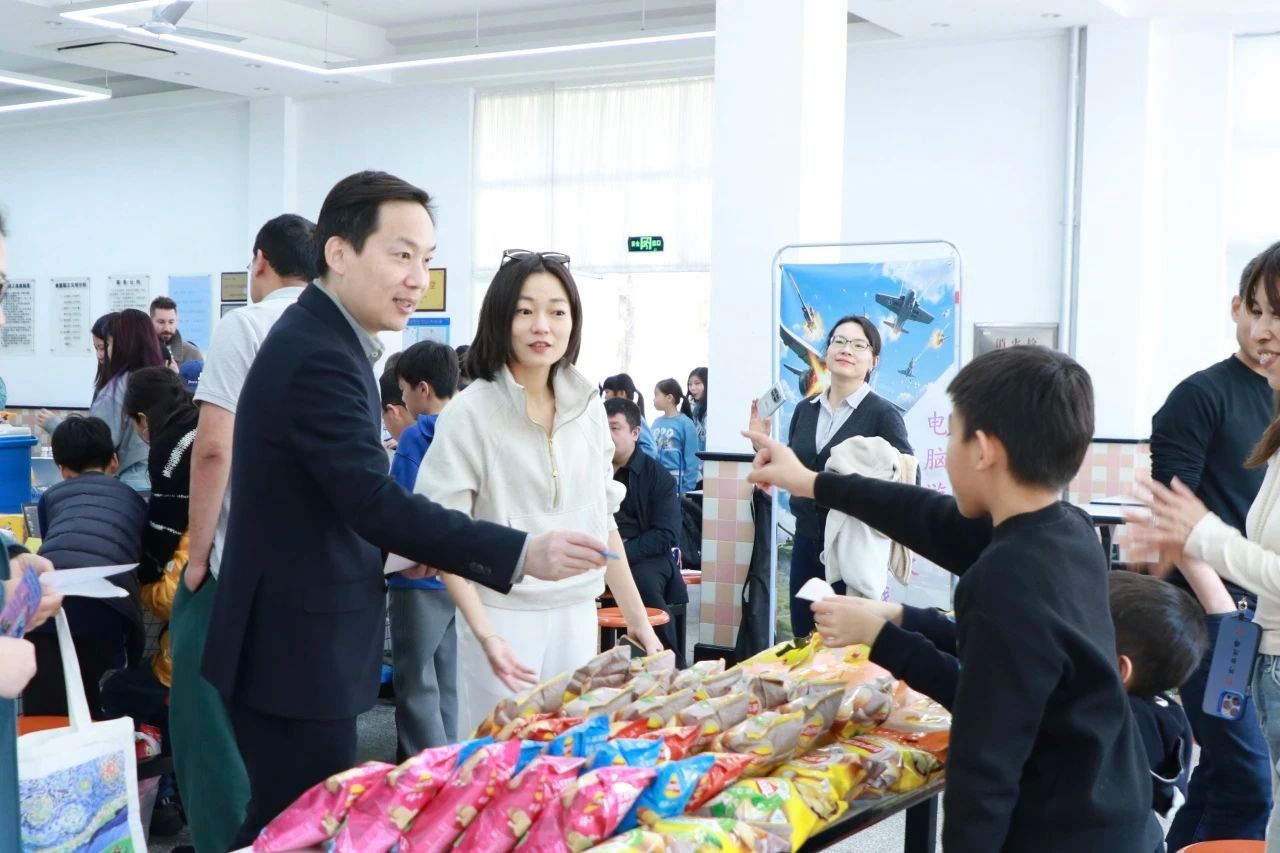
After the event, students crunched the numbers and reflected deeply on their results. Using their math project notebooks, they compiled income records, calculated gross profits with addition and subtraction, and illustrated their data with colorful pie charts. In their project summaries, students critically evaluated their booth designs and marketing strategies. One team noted, “The prize structure for our spin-the-wheel game attracted many, but the high cost of small prizes cut into our profits.” Another reflected, “Despite careful planning around pricing and marketing, the long wait times for our mini-games led to crowding issues.” One group found their product too similar to others', forcing repeated price cuts to stay competitive: “Next time, we’ll conduct preference surveys and competitor analysis in advance.” Through these reflections, students began thinking like entrepreneurs, using data to improve and shifting from a consumer’s mindset to that of a problem-solver.
In the Grade 4 “Geometry City” project, creativity took center stage as students turned geometric concepts into miniature metropolises. They laid out road networks using parallel and intersecting lines, measured building gaps and fire lanes with rulers and right angles, and shaped their cities with polygons of all kinds—trapezoidal gyms, octagonal lighthouses, circular orchards, and more. Cultural diversity was also part of the blueprint: from pentagonal glass-structured museums inspired by postmodernism to rhombus-latticed pavilions with traditional Chinese eaves, geometry met design in inspiring ways.
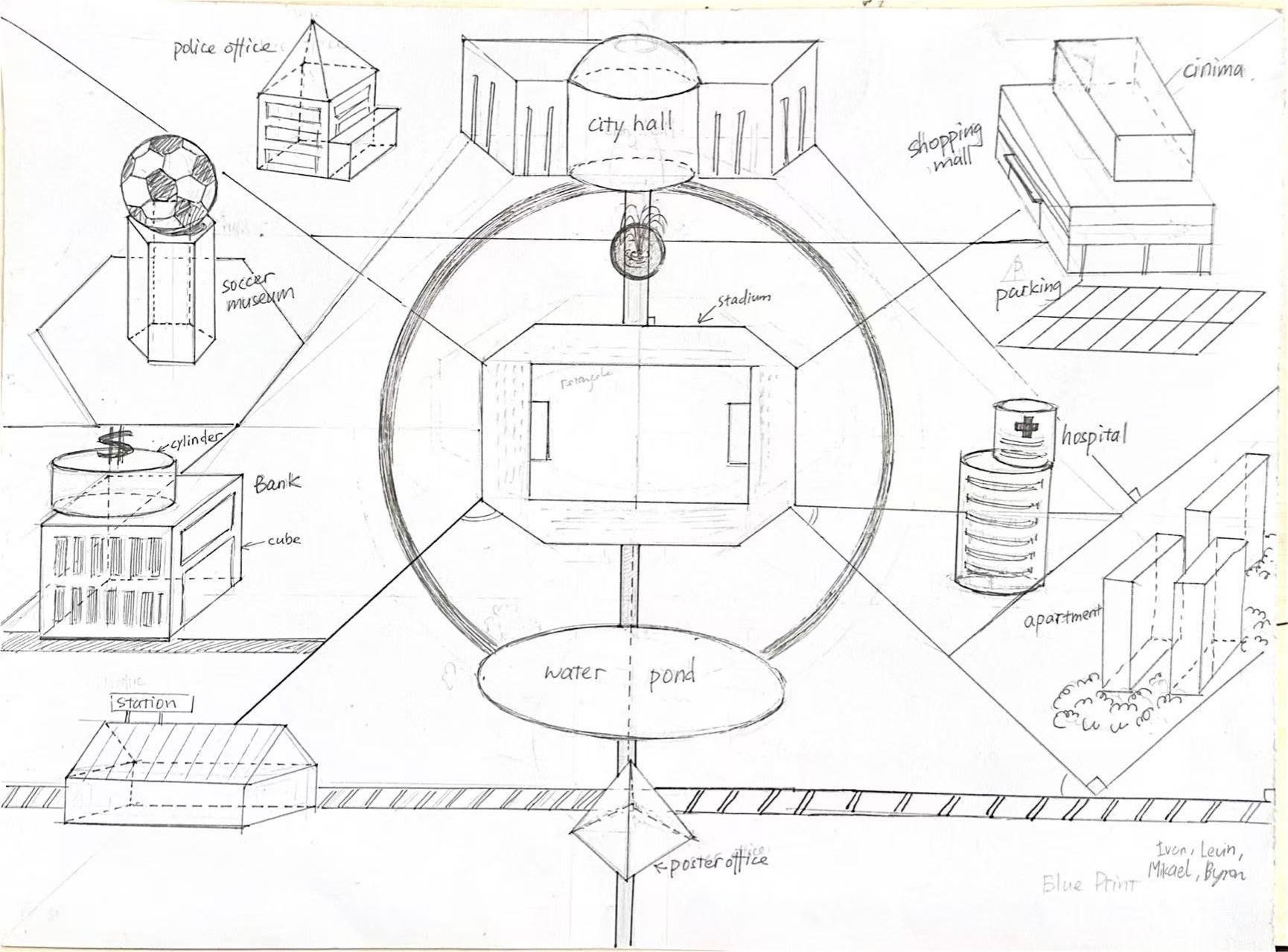
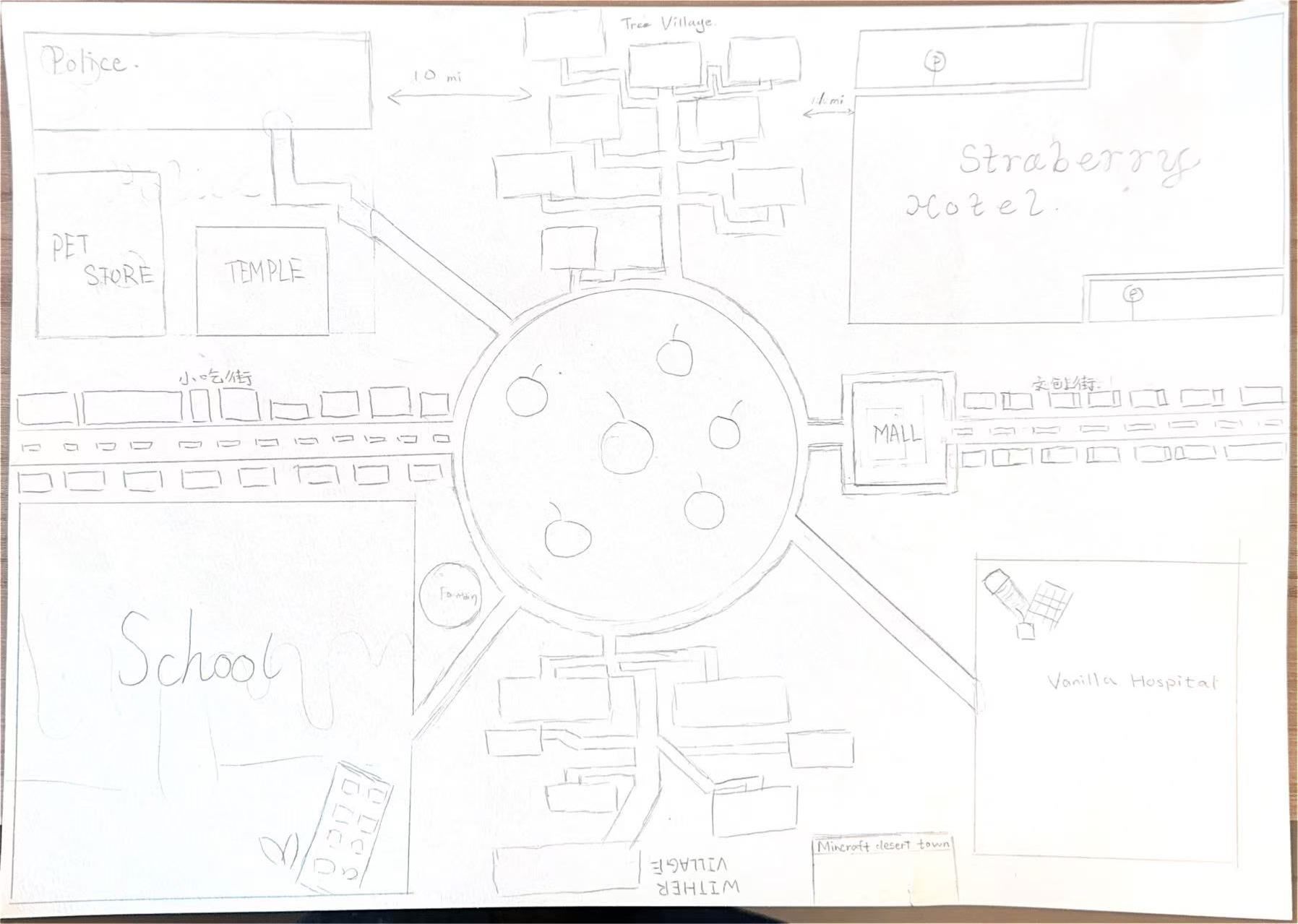
From drawing board to 3D model, the fourth graders showed remarkable inventiveness and precision. Roads 2 centimeters wide connected a variety of uniquely designed buildings: a cylindrical signal tower flowed seamlessly into a sports dome, while hemispherical roofs were transformed into open-air gardens and theaters. Rectangular walkways linked parallelogram-roofed halls with triangular parks, creating harmonious spatial dialogues between flying eaves and polygonal windows. Students overcame challenges in model construction and material strength, eventually presenting a micro-city no larger than 60cm by 100cm in area and 320cm in perimeter—an intricate and efficient design that impressed all who saw it.
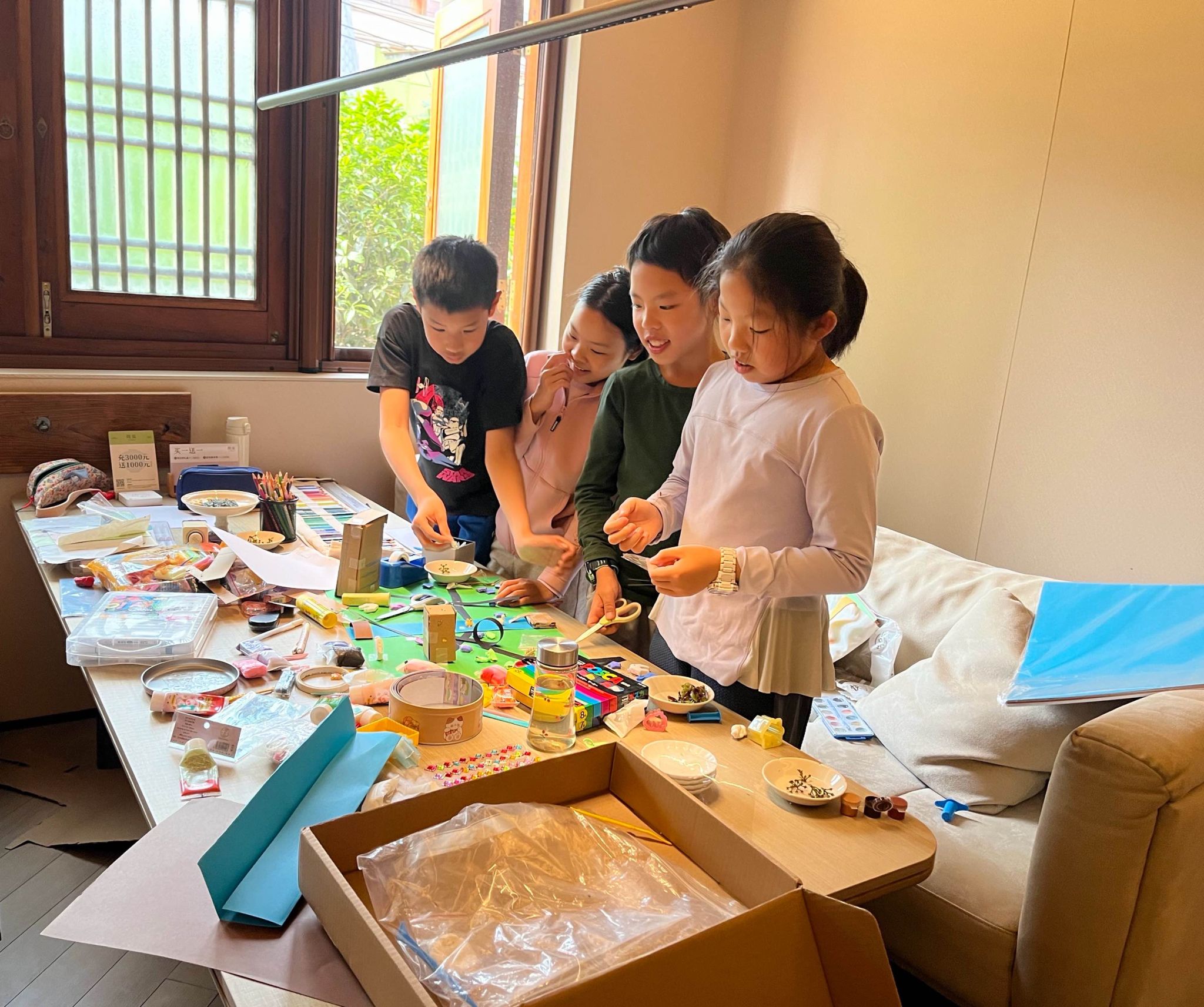
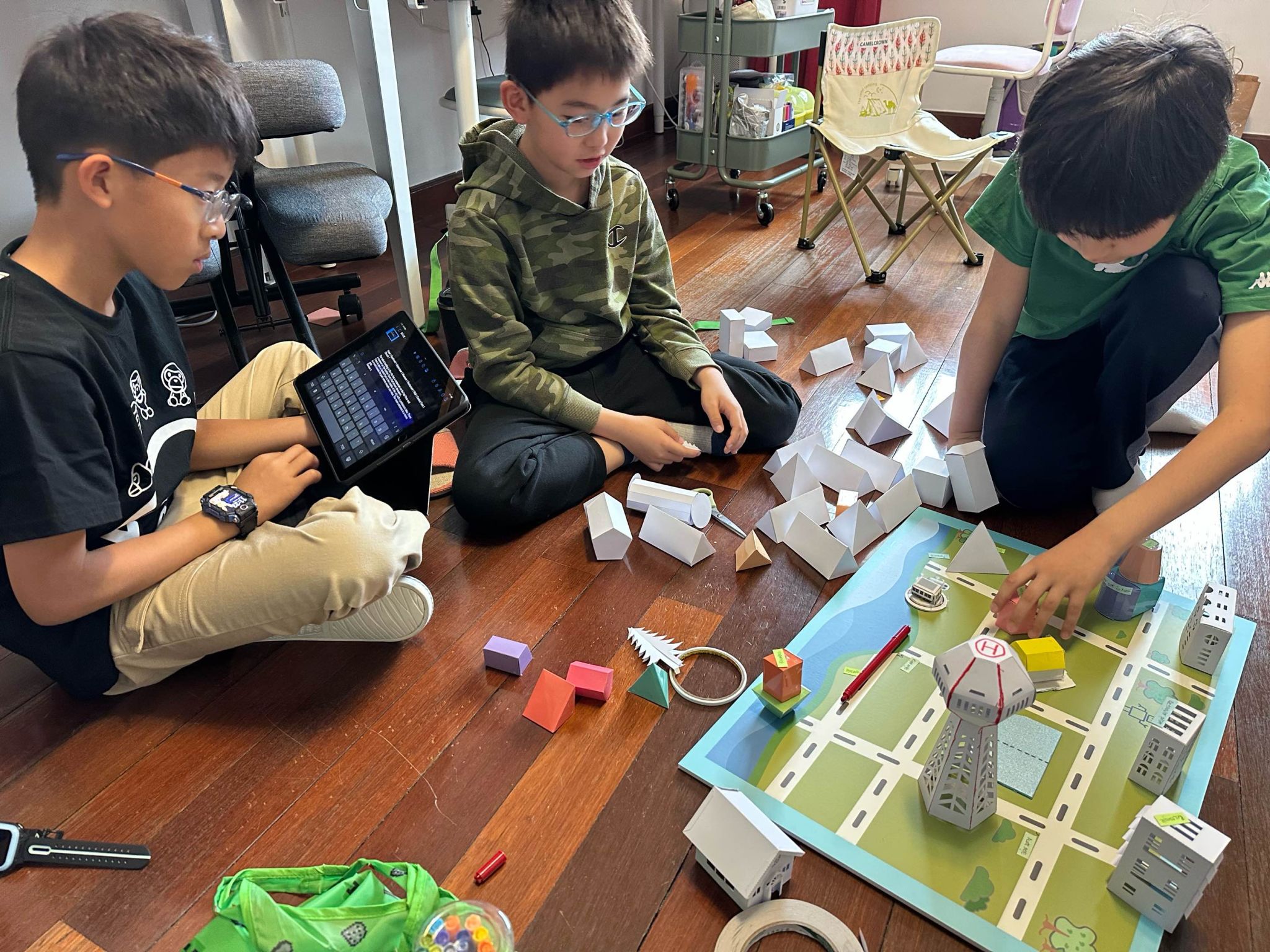

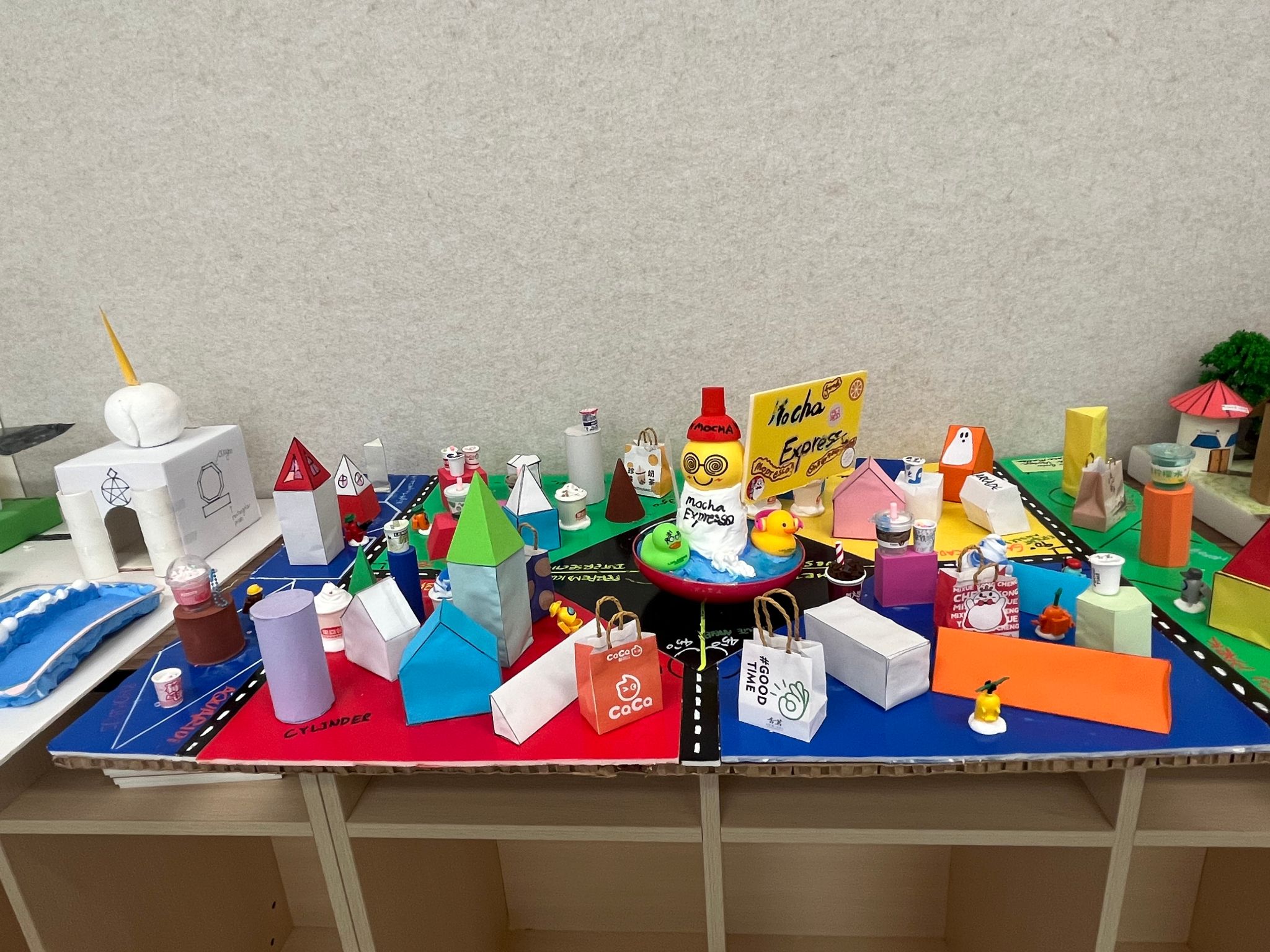
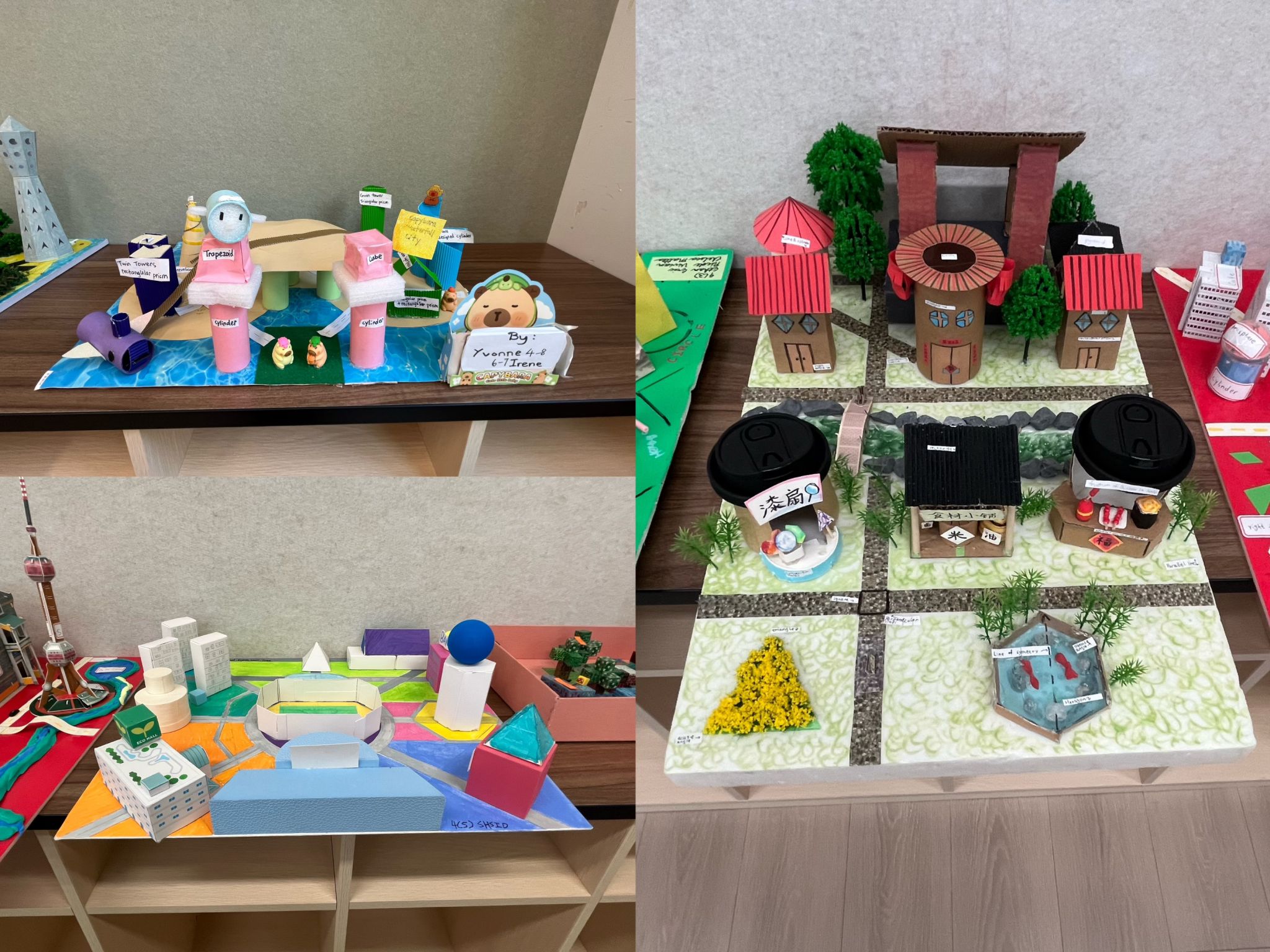
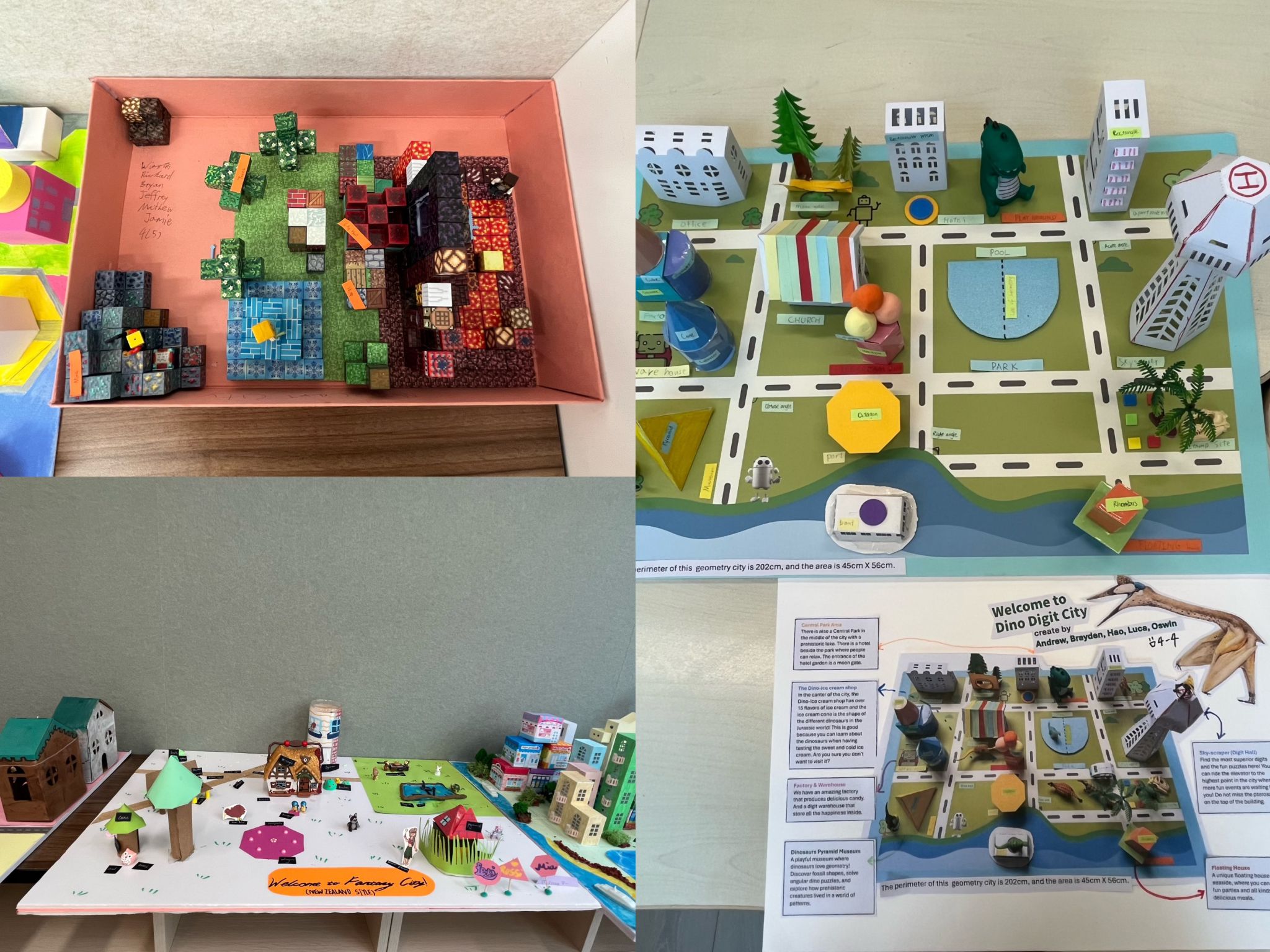
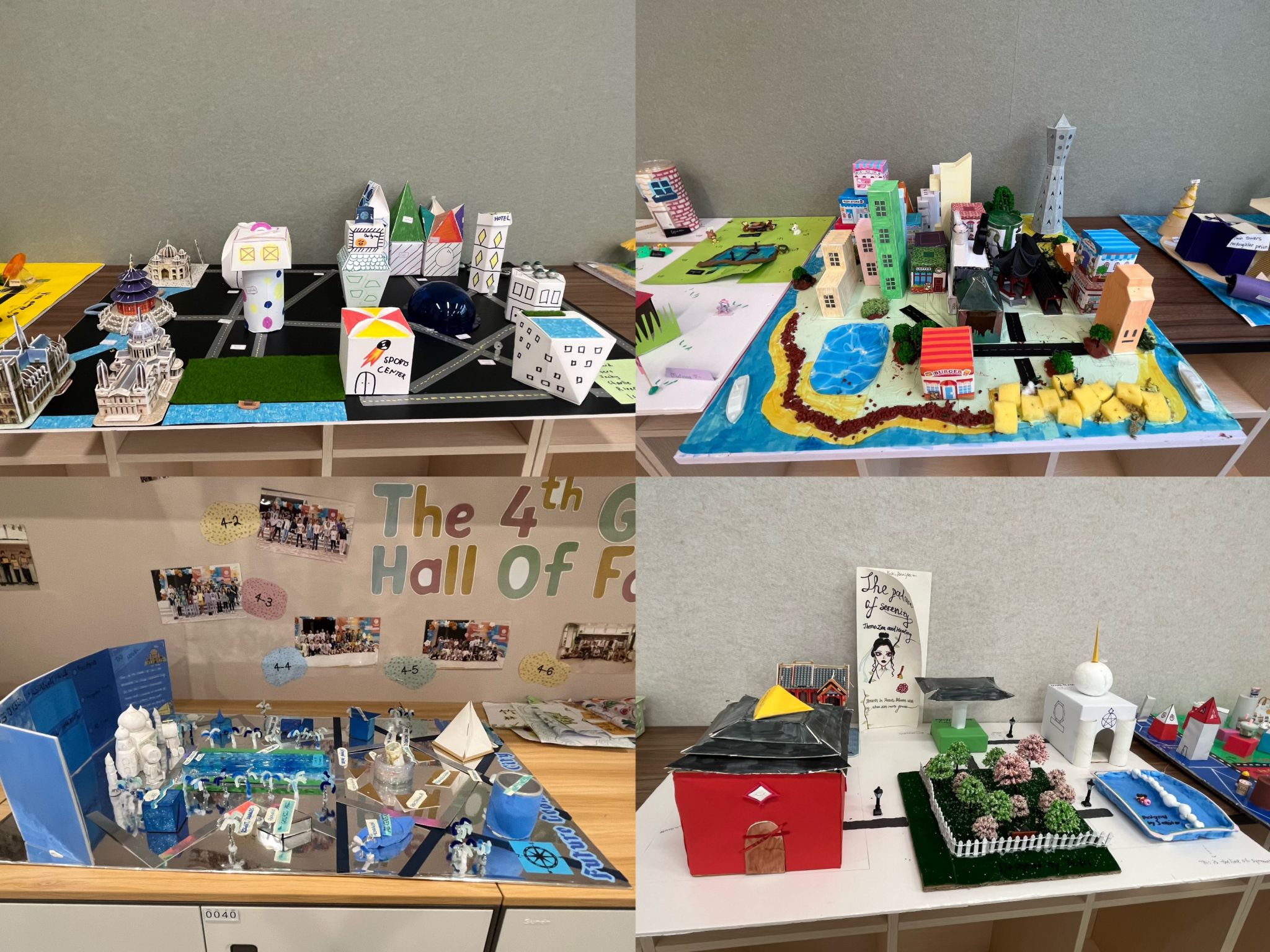
In the project’s final stage, students became “city curators,” presenting their work through model showcases, design presentations, and interactive Q&A sessions. A voting system invited teachers and peers to select the most outstanding designs, fostering community engagement and recognizing student excellence.
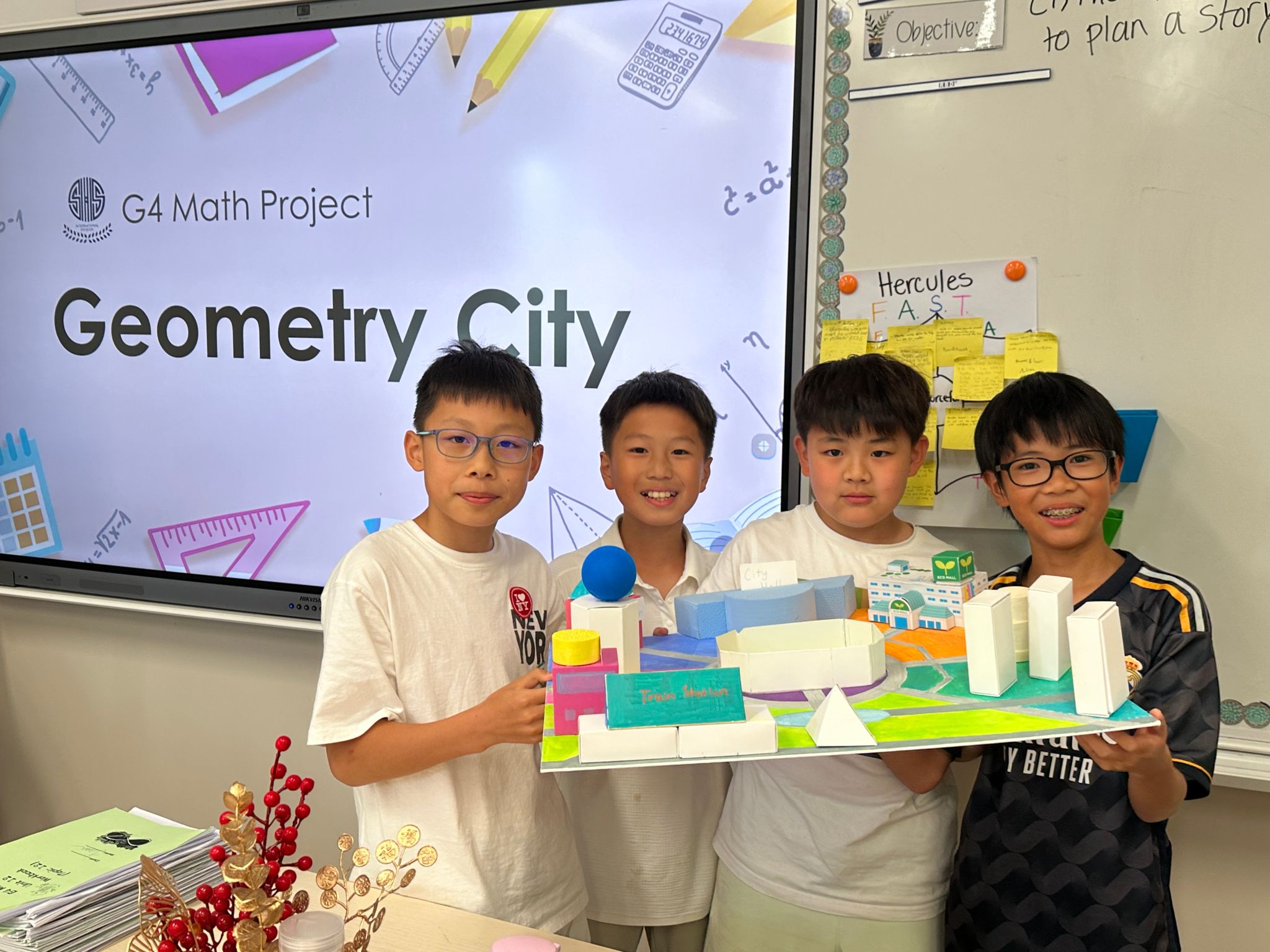
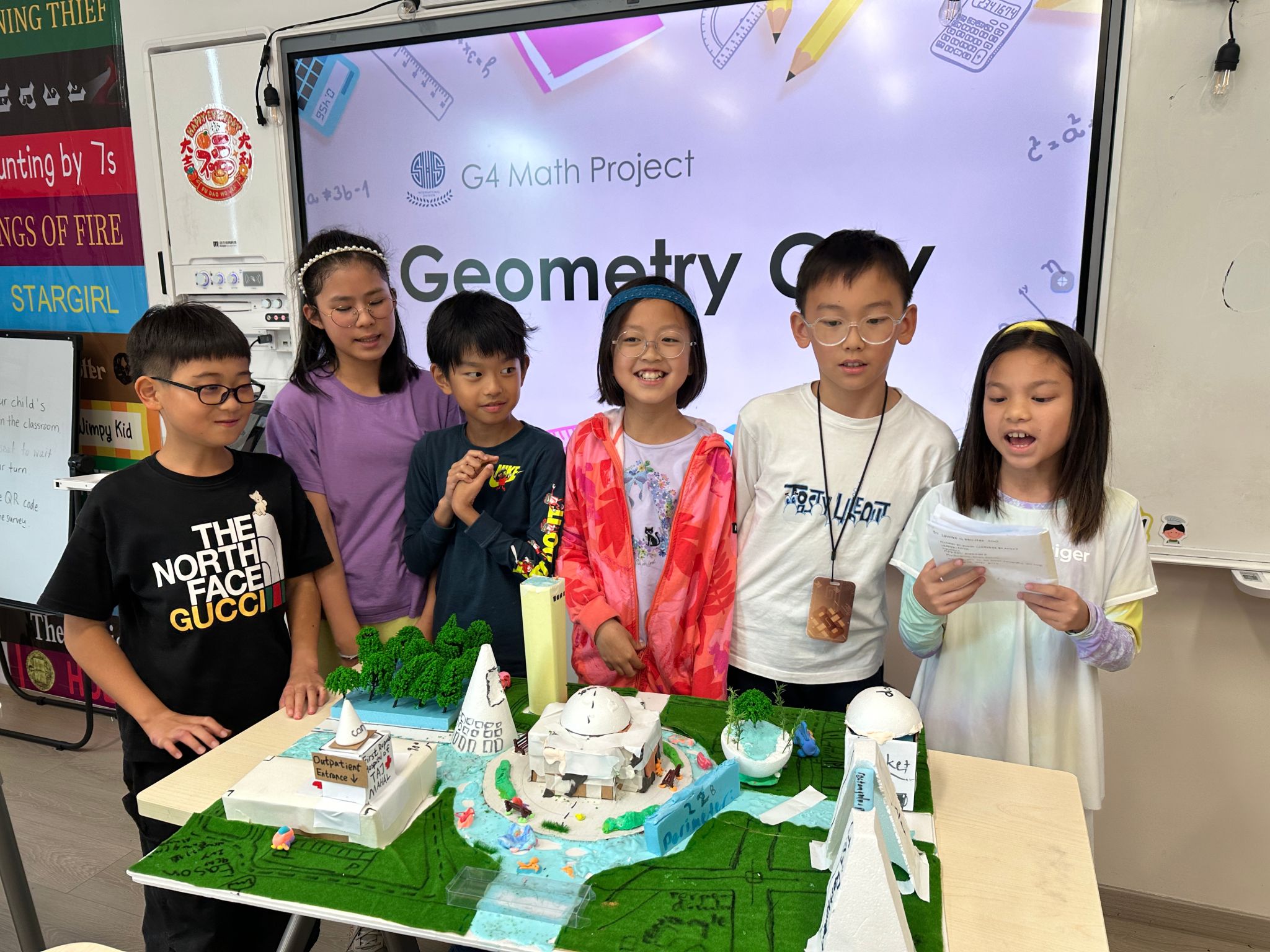
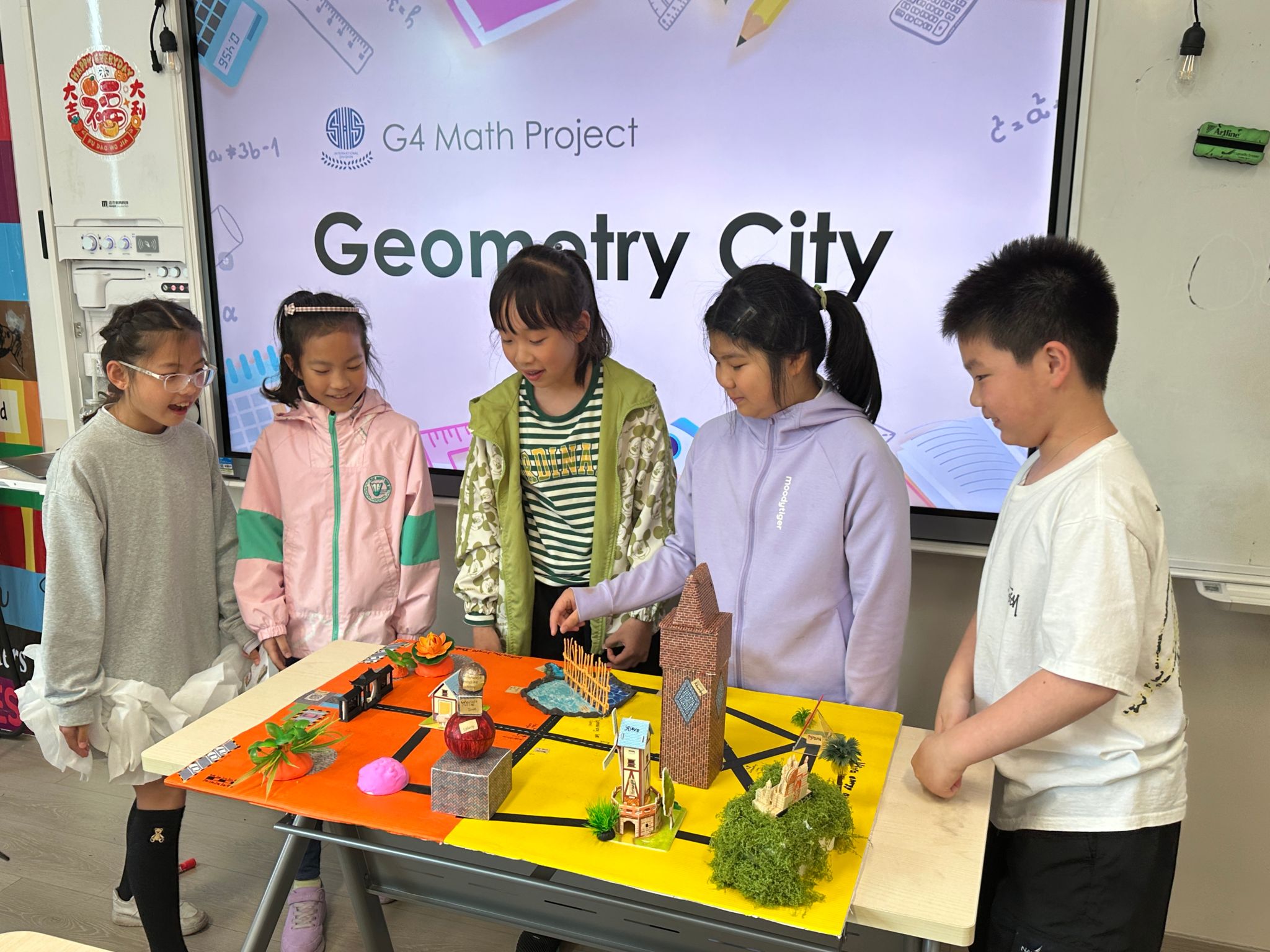
From profit calculations to real-world problem-solving, from blueprints to buildings, G4–G5 students have shown that math is everywhere and alive in their hands and hearts. Quietly, confidently, the seeds of mathematical thinking are beginning to bloom.
Written by Jie Zhou
Photos by Grade 4 and Grade 5 Teachers